The Best Polenta Recipe
Polenta is a traditional Italian dish made from boiled cornmeal. Its origins can be traced back to the northern regions of Italy, where it has been a staple food for centuries. Historically, a polenta recipe was made from a variety of grains, but with the introduction of corn from the Americas in the 16th century, maize became the primary ingredient.
The preparation of this polenta recipe involves simmering cornmeal in water or broth until it reaches a thick, porridge-like consistency. It requires constant stirring to prevent lumps and ensure a smooth texture. Once cooked, polenta can be served in various forms. Freshly made, it is often soft and creamy, similar to mashed potatoes. Alternatively, it can be left to cool and solidify, then sliced and fried, grilled, or baked.
Polenta is incredibly versatile and can be paired with a wide range of ingredients. It is commonly served as a base for hearty stews, meats, and vegetables. It is topped with cheese, butter, or tomato sauce in some regions. Its mild flavor and satisfying texture make it a popular choice in both rustic and gourmet cuisine.
In recent years, polenta has gained popularity beyond Italy, appreciated for its gluten-free nature and adaptability in various dishes. Whether enjoyed as a comforting porridge or a crispy side dish, polenta remains a beloved culinary tradition.
Cooking Cornmeal
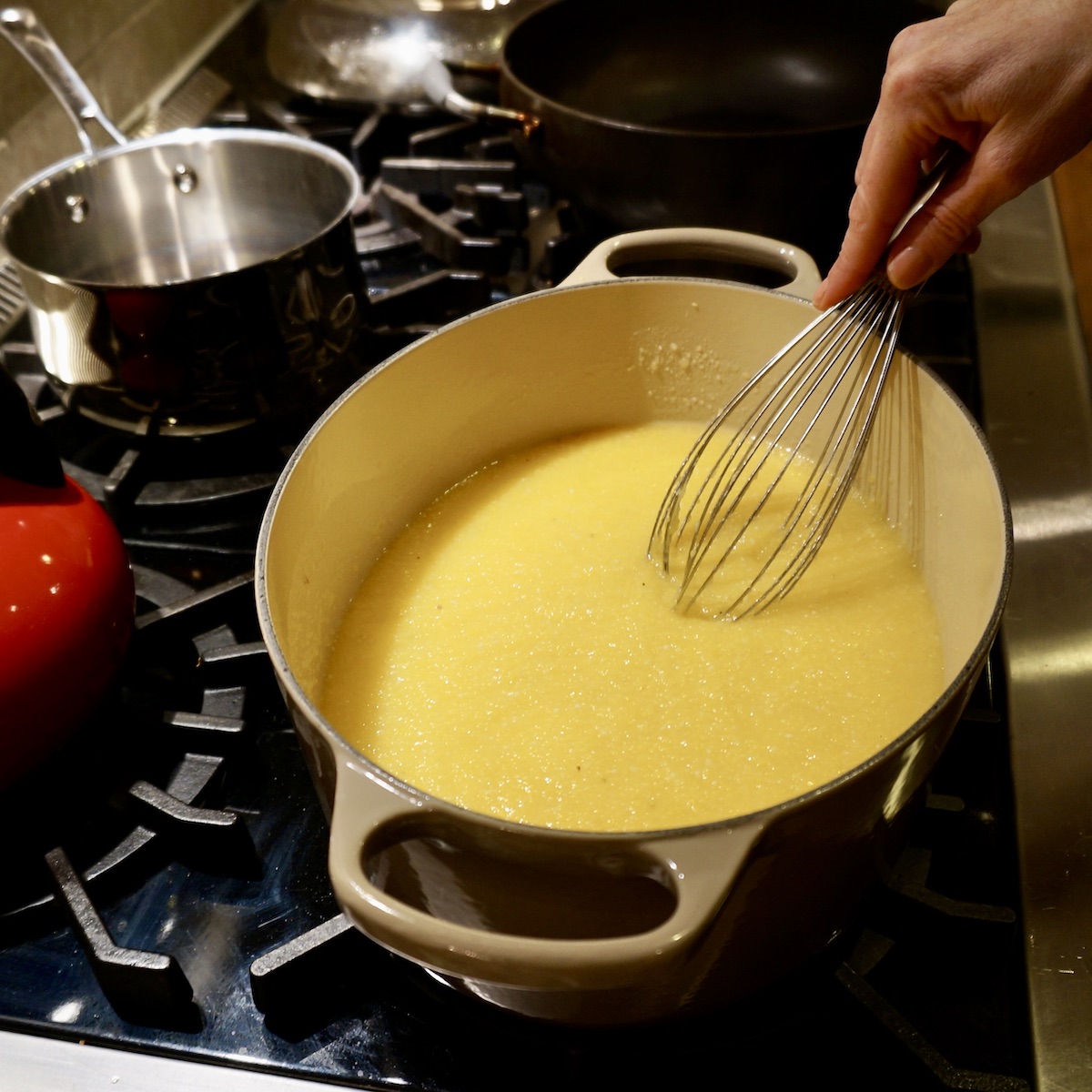
Cooking cornmeal to make polenta involves a straightforward technique, but it requires attention and patience to achieve the desired consistency and flavor. Here’s a basic guide to cooking cornmeal:
Choose the right cornmeal: There are different types of cornmeal available, ranging from coarse to fine. Coarser varieties tend to result in a more textured polenta, while finer ones produce a smoother consistency. Choose the type of cornmeal based on your preference and the recipe you’re following.
Boil water or broth: In a large pot, bring water or broth (such as chicken or vegetable broth) to a boil. The ratio of liquid to cornmeal can vary depending on the desired thickness of the polenta, but a common ratio is about 4 parts liquid to 1 part cornmeal.
Add cornmeal gradually: Once the liquid is boiling, gradually add the cornmeal to the pot while stirring constantly. This helps prevent lumps from forming. Use a whisk or wooden spoon to incorporate the cornmeal into the liquid.
Reduce heat and simmer: Once all the cornmeal has been added, reduce the heat to low to maintain a gentle simmer. Continue to stir the polenta frequently to prevent it from sticking to the bottom of the pot and to ensure even cooking.
Cook until thickened: Cook the polenta for about 20-30 minutes, or until it reaches the desired thickness. The longer you cook it, the thicker it will become. Some recipes call for longer cooking times to achieve a creamier texture.
Season to taste: Once the polenta is cooked to your liking, season it with salt and pepper to taste. You can also add butter, cheese, herbs, or other flavorings at this stage for extra flavor.
Serve hot: Remove the polenta from the heat and serve it immediately while it’s still hot and creamy. It can be served as a side dish or used as a base for other ingredients, such as stews, sauces, or grilled vegetables.
By following these steps, you can master the technique of cooking cornmeal to make delicious and versatile polenta.
Stay Away From “Instant” Polenta
Instant polenta, while convenient, often lacks the texture and depth of flavor that traditional, slow-cooked polenta offers. Here are a few reasons why some people prefer to stay away from instant polenta:
- Texture: Instant polenta is processed to cook quickly, resulting in a finer texture compared to traditional polenta. Many find that instant polenta lacks the creamy consistency and rustic texture of polenta made from scratch.
- Flavor: The quick-cooking process of instant polenta can sometimes lead to a bland or less pronounced corn flavor compared to polenta cooked slowly over low heat. Traditional polenta benefits from the gradual absorption of flavors from the cooking liquid, resulting in a richer taste.
- Nutritional value: Instant polenta may contain additives or preservatives to aid in its quick cooking process, which some people prefer to avoid for health reasons. Additionally, the finer milling of instant polenta may affect its nutritional profile compared to coarser, stone-ground varieties.
- Versatility: Traditional polenta can be cooked to different consistencies, from creamy to firm, depending on preference and intended use. Instant polenta may not offer the same versatility in texture.
- Cooking control: Cooking traditional polenta allows for greater control over the process, such as adjusting the cooking time and stirring frequency to achieve the desired consistency and flavor. With instant polenta, the cooking process is more standardized and less adaptable to personal preferences.
While instant polenta can be a convenient option for quick meals, many enthusiasts of Italian cuisine prefer the slow-cooked, traditional method for its superior texture, flavor, and versatility.
The Secret Ingredient for Fast, Creamy Polenta
Baking soda is sometimes used as a secret ingredient in polenta recipes, although it’s not universally employed. Adding a small amount of baking soda to the cooking liquid can help speed up the softening of the cornmeal and make the polenta creamier in texture.
Here’s how baking soda works in polenta:
- Alkalinity: Baking soda is alkaline, which helps break down the cornmeal more efficiently during cooking. This can result in a smoother texture and reduce the cooking time required to achieve the desired consistency.
- Softening: The alkalinity of baking soda can also help soften the cornmeal, making it easier to achieve a creamy polenta without overcooking it. This can be particularly useful when using coarser varieties of cornmeal that may require longer cooking times to become tender.
- Color: Baking soda can sometimes affect the color of the polenta, giving it a slightly lighter hue. While this may not be a significant factor for everyone, some chefs prefer the appearance of polenta made with baking soda.
However, it’s essential to use baking soda sparingly, as too much can alter the flavor of the polenta and give it a slightly metallic taste. Additionally, some purists prefer to avoid baking soda altogether, opting for a slower cooking process to achieve the desired texture and flavor without any additives.
Ultimately, whether or not to use baking soda in polenta is a matter of personal preference and the specific recipe being used. It can be a handy trick for achieving a creamy texture in less time, but it’s not necessary for making delicious polenta.
Creamy Polenta Recipe
Ingredients
- 7½ cups water
- 1½ teaspoons salt
- 1 pinch baking soda
- 1½ cups cornmeal coarse-ground
- 2 tablespoons butter unsalted
- 2 cups Parmesan cheese grated, plus extra for serving
- freshly ground black pepper
Instructions
- In a large heavy-bottomed pan, Madeline used a Le Creuset cast iron pot, heat the water over medium-high heat and bring to a boil. Stir in the salt and baking soda.
- Add the cornmeal to the pot in a steady stream and stir constantly until all the cornmeal is added. Bring the water back to a boil, still stirring constantly for one minute.
Keep the Heat Low
- Lower the heat to as low as you can go without the flame going out on a gas stove or the lowest possible setting on electric. You don’t want the polenta to “bubble or sputter” so if you lowest setting doesn’t do it, use a flame tamer or heat diffuser to lower the heat.
- Cover the pot and cook for 5 minutes. Remove the cover and remove any lumps with a whisk to remove any that may have formed. Be sure to scrape down the sides and bottom of the pan.
- Cover the pot and cook for another 20 to 25 minutes until the polenta is perfectly cooked. It should be tender but not mushy.
- Add the butter and cheese, stir, add the the black pepper to taste, stir again, cover and let it sit for 5 minutes.
- Serve with the extra Parmesan cheese.

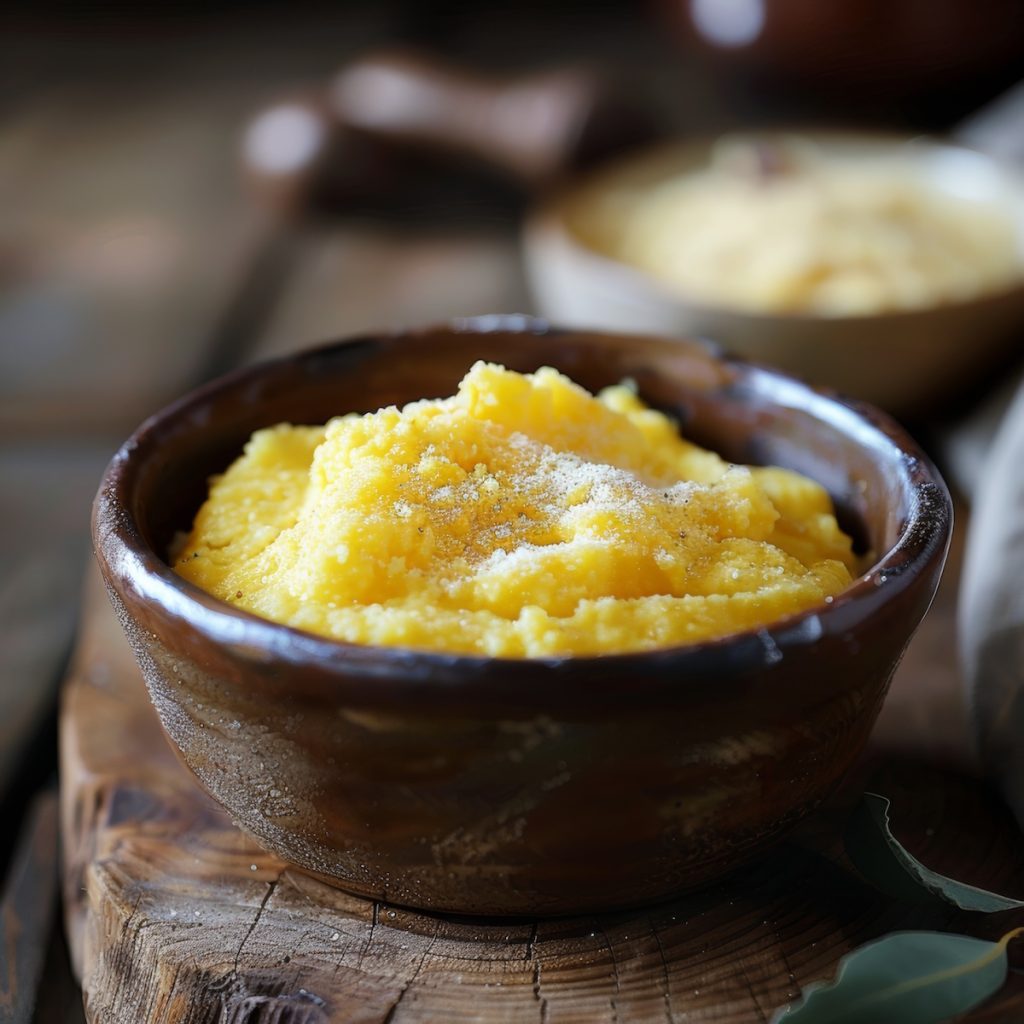
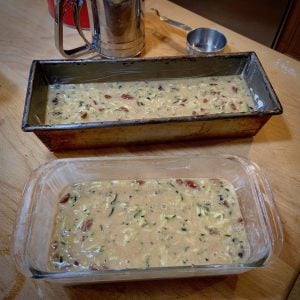
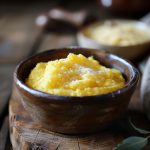
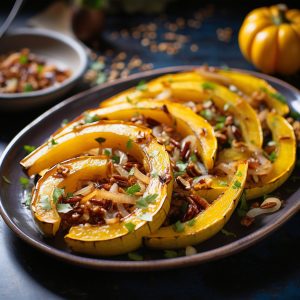
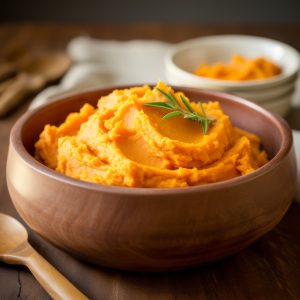
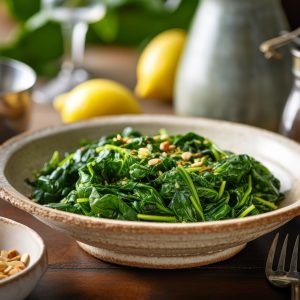
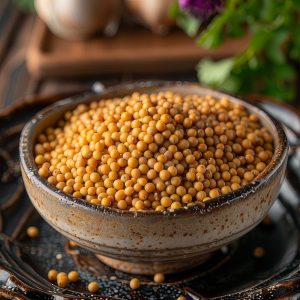

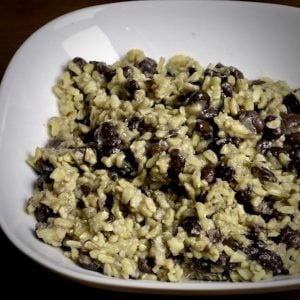
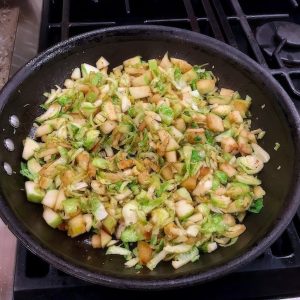
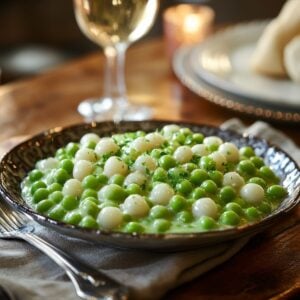


One Response
Are you able to use regular grits (White corn?